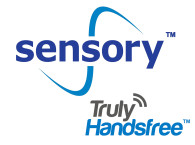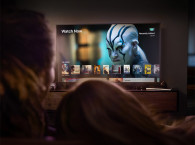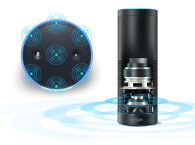
After failing to gain some market share in the tablet wars with its Android-based Fire range, Amazon's engineers apparently decided to go back to the drawing board and rethink what exactly made the Amazon Echo so successful (including in terms of media attention). No doubt the ability to interact with the Internet and home automation systems with voice commands was the focus for the device's success. But as consumers start to understand the full potential of voice recognition, voice commands, and intelligent VPAs, there's one thing that becomes apparent - the concept's simplicity. In fact, the Amazon Echo concept was able to propel Amazon's Alexa technology to a mainstream position, and compete head to head with all the previously existing VPAs - Microsoft Cortana, Google Assistant and more notably with the powerful Apple Siri ecosystem, available on the iPhone, iPads, and even Mac computers.
Apple executives have, in a somewhat unusual manner, made public comments about the Amazon Echo and have particularly highlighted its main strength, which is the device's ability to truly empower voice interaction in a favorable usage scenario. Because it's a speaker, the Echo is able to play voice and music at loud volumes and combines a complete microphone array for far-field capture, something that is truly vital for hands-free operation. Even though the Amazon Echo doesn't have a screen, the simple concept works for those users that are willing to talk to machines and don't actually mind that they have an object connected to Internet that's listening to everything in its vicinity 24 hours a day.

So, if consumers responded positively to this way of interacting with Alexa, through a speaker, Amazon thought it would be logical to expand the concept with the remaining missing pieces. With the new Echo Show, Amazon also announced the new Echo Look, another "let's see if it works" concept, this time with a camera. The Echo Look ($199.99) is basically an Alexa-powered home hands-free camera that is able to take photos and short videos; featuring built-in LED lighting, a depth-sensing camera, and computer vision, complemented with a companion app. So, not only can Amazon listen to you, it can see you all the time as well!
Next up, comes the new Amazon Echo Show, that does exactly what any tablet can do, with an important difference - it stands on a purposely designed tabletop device that is dominated by a 7" touchscreen, topped by a 5 megapixel camera, allowing it to be used at a distance - a new usage scenario for video communications, which have until now focused on front-facing close-up cameras for tablets and smartphones, or the typical videoconferencing room usage of corporate applications (remember those purposely built videoconference rooms with everyone sitting around a table?). The Echo speaker experience enabled Amazon to envisage a completely new and interesting usage scenario of "far-field" video calls that should please a new generation of users, as the promotional video clearly shows. A FaceTime on steroids, if you will, is probably the most significant reason for Apple's executives to be scared since the iPhone launch.

Inside the Amazon Echo Show, there is basically a dedicated "tablet," powered by an Intel Atom x5-Z8350 processor, complete with Wi-Fi connectivity (Dual-band Wi-Fi 802.11 a/b/g/n), Bluetooth connectivity with A2DP support for audio streaming from a mobile device to Echo Show or from the Echo Show to another Bluetooth speaker, and... most importantly, dual 2" stereo speakers (not exactly an improvement over the Echo sound quality), which Amazon says use Dolby digital signal processing.
The way Amazon is promoting its key application is by suggesting people use it for video-calls with other Echo Show users, or with users of the Alexa App on Android, Windows, and iOS. To enable good quality hands-free video calls from users which typically are not close to the device, the Echo Show uses eight microphones, beam-forming technology, and noise cancellation, allowing it to hear commands from any direction - even while music is playing. This way, as Amazon promotes, "voice responses from Alexa are now enhanced with visuals and optimized for visibility across the room."
A big if, known by anyone who owns an iOS device and rarely uses FaceTime, is that those "video calls" only work with other people who have an Echo Show or are running the Alexa App on their devices. Again, as with Skype, where users need to be online, there is no "universal" calling method that simply works, like we have with phone numbers. Still, Amazon has designed something interesting, which is a feature called Drop In, for "when you want to connect with your closest friends and family," as they explain. Drop In is a sort of automation feature that allows placing a call at a certain time, or simply "peek" at a camera on the baby's nursery, or check in on grandma. We will need more details to understand what else it will allow.
Like the Amazon Echo Look, the Echo Show also supports Audio/Video Remote Control Profile (AVRCP) over Bluetooth for voice control of connected mobile devices. So, it's also a complete automation hub with other compatible smart-home devices. On the screen itself, users can see videos on YouTube, see a streaming music service interface (e.g., Spotify), see music lyrics of the song playing, check remote security cameras, photos, weather forecasts, to-do and shopping lists, and more. All accessible hands-free over Alexa commands (even though you can actually approach it and use the touch-screen like with any other tablet...).

The Alexa Voice Service is able to trigger any of the features that manufacturers decide to implement on connected devices, like dim the lights, or open the garage, but also access services like book a restaurant or transportation, using connected platforms "Without lifting a finger." This means that you can easily program the Echo Show to display a live camera feed from the front door, whenever someone rings the doorbell. Amazon highlights the compatibility with home automation devices from brands such as Ring, WeMo, Philips Hue, SmartThings, ecobee, Wink, and others. If users have more than one Echo Show, Echo, or Echo Dot, Alexa responds from the device that's closest, and Amazon says that you can always limit the interaction with Alexa by simply turning the mic/camera button off.
More importantly, with a new device like the Echo Show, Amazon will be able to increase the number of Alexa users, essential to improving the platform that's, "Always Getting Smarter." Alexa needs continuous user input to adapt to speech patterns, vocabulary, and personal preferences. As with any Alexa-enabled device, the Echo Show is always connected, and updates are automatically delivered to the cloud. This is scary in many ways, but it's probably scarier for all the manufacturers that are starting to realize how threatening Amazon's strategy can be...







